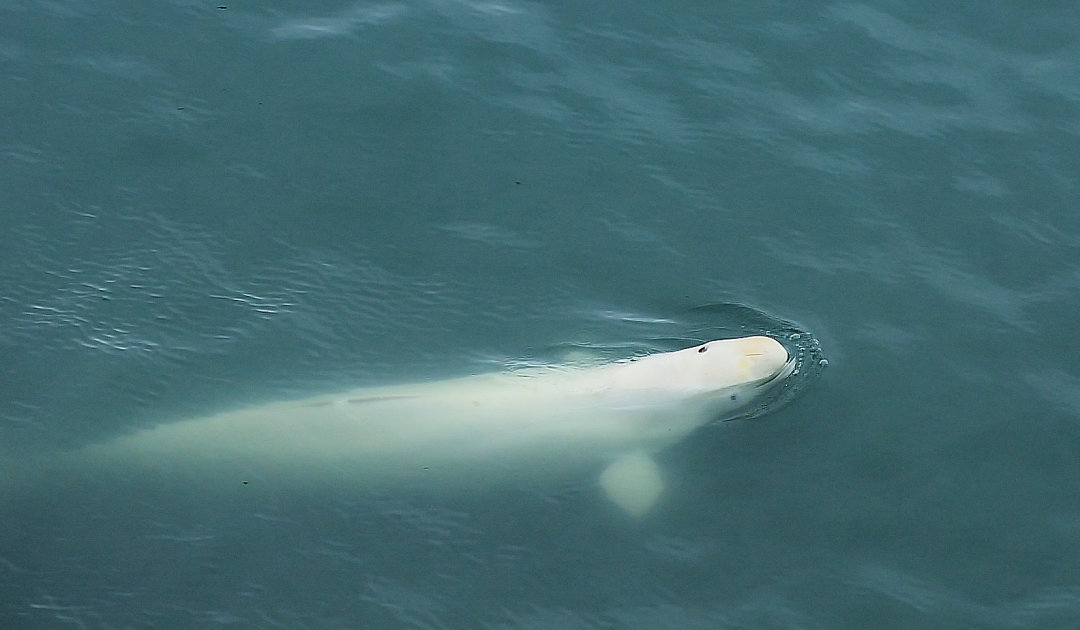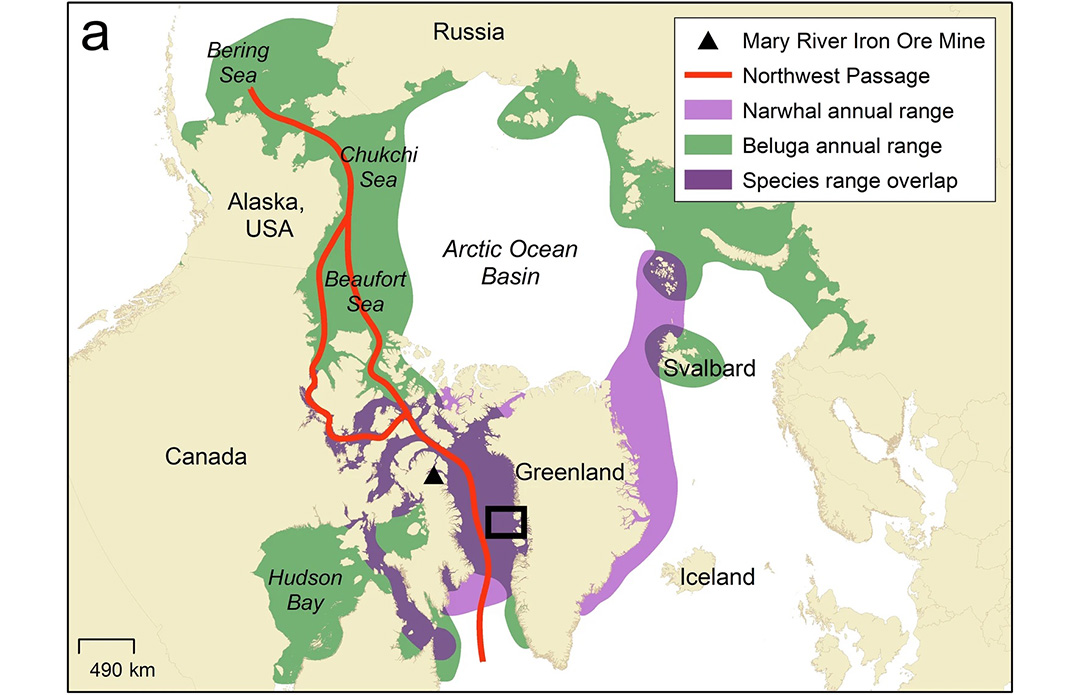
Only two species of toothed whales – beluga whales and narwhals – live in the Arctic year round. While belugas are found circumpolar, narwhals are only found in the Canadian Arctic, off West and East Greenland, north of Svalbard and around Franz Josef Land. Both species are closely related being the only members of the family Monodontidae. Very rarely even breeding occurs between belugas and narwhals. For orientation and tracking their prey, they use echolocation, like other toothed whales. In a recent study, an international team of researchers has now investigated whether the characteristics of the echolocation clicks of the two species differ and whether they can be identified by those alone.
The ability to distinguish belugas and narwhals using passive acoustic monitoring (PAM) – listening to their sounds within their ranges with underwater microphones – has great significance in estimating their population sizes. The non-invasive method is particularly important to monitor the responses of the two species to climate change and increasing underwater noise. This is done by deploying multiple hydrophones over a large area for an extended period of time.

Belugas and narwhals have a large acoustic repertoire and show considerable overlap and variability in their social sounds, making it difficult to distinguish the two species based on acoustics alone. In the current study, the researchers compared for the first time the sounds of wild belugas and narwhals in the same area in the pack ice of Baffin Bay off West Greenland. They were able to show that the echolocation clicks of the two species are clearly different from each other and that they can be classified by these sounds.
While the majority of beluga clicks were at a frequency above 60 kilohertz, the frequency of narwhal clicks was less than 60 kilohertz. In addition, acoustic parameters varied more in belugas than in narwhals. The researchers achieved classification of the acoustic parameters into the two species by using a bioacoustic model that successfully discriminated 97.5% of events.

Knowledge of the two Arctic cetacean species is far from sufficient to determine their greatest threats. Therefore, no specific protection measures could be initiated yet. According to the authors, narwhals are one of the Arctic marine mammal species most sensitive to climate change due to their specialized lifestyle and limited distribution. Both species show a high degree of site fidelity in their summer and winter ranges, although the causal factors for this behaviour have hardly been studied to date.
In addition, as climate change continues, the ice-free period is becoming longer, increasing the opportunity for exploration of the vast oil and gas resources in the Arctic, as well as increasing commercial and tourist shipping. Therefore, the relevant stakeholders need to be informed about which regions are vital to the survival of belugas and narwhals as feeding grounds, breeding grounds and migration routes in order to mitigate industrial activities, the authors said. In their view, it is necessary to adopt strict rules on vessel speed, appropriate shipping routes and the type of activities allowed in order to avoid negative consequences for the whales.
Julia Hager, PolarJournal
More on the subject:





